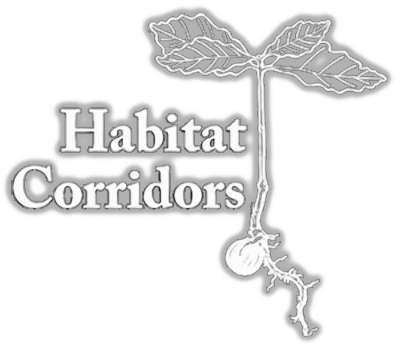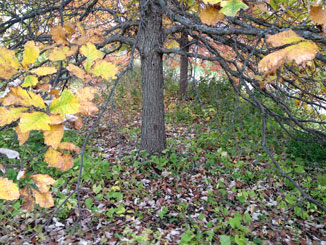Saving living space for living
things one yard at a time
Dead Leaves — Again!
Nag, nag, nag! It’s one thing I do well. However, this time I’m repeating the subject of an earlier “Seasonal Tip” because it is so very important.
Please don’t blow or rake your dead leaves into a pile and let someone haul them away. Please don’t burn them. Dry leaves are a priceless commodity. Like everything else in nature, this tree/shrub byproduct exists for multiple reasons. Shedding dead leaves allows our woody plants to recycle the nutrients it has worked hard to extract from the soil, air, and water throughout the growing season. These nutrients are stored in the leaves. Oak leaves belong under oak trees; spicebush leaves belong under the spicebush, and so forth.
Besides slowly breaking down and providing future nourishment, the leaves also act as mulch, holding moisture in the soil, moderating soil temperature, and improving soil tilth. Our soils become nothing but crushed rock when we remove the organic matter.
Additionally, raking leaves and piling them under the trees and shrubs from which they fell provide a place for butterfly and moth larvae to overwinter. Leaves provide shelter from the cold for the toads, spiders, other arthropods, and bumblebee queens that are absolutely vital to the health of our environment. As dead leaves are carted away from a property, the environment becomes barren - although we may not be aware that this is so.
If you have ground covers and wildflowers under your trees and shrubs, those plants will hold tight to the dead leaves and keep most of them from blowing away and creating a “mess.” If you don’t have plantings to hold the leaves, try raking them under the woody plants and covering with a very thin layer of wood chips. The chips will keep the leaves in place and, hopefully, allow some of those critters to find suitable winter homes. By the way, don’t cart the leaves away in spring. You’ll be removing the nutrition just as it is being recycled, and you will destroy all the butterfly larvae and other critters that have spent the winter safely on your property.
Try this for a few years, and you will be amazed at the improvement in your soil. It will become soft, almost fluffy. It will hold moisture and allow you to easily pull weeds, even those with long tap roots. This is an easy way to improve the health of your home environment and protect wildlife at the same time.

